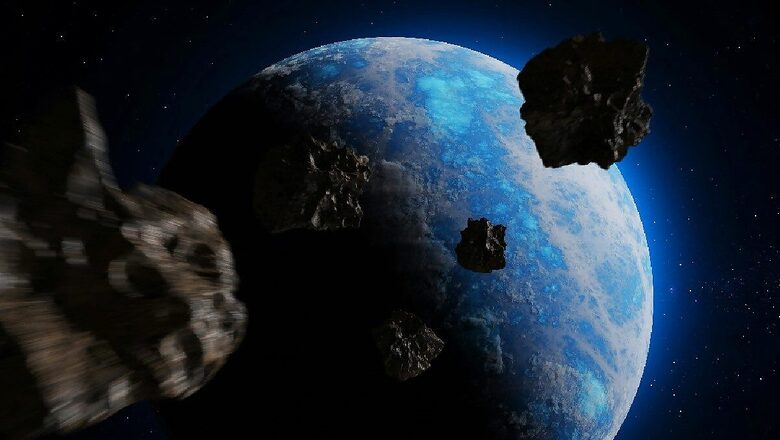
views
Earth will showcase the power of its gravity in a rare celestial event where it can be seen gaining a temporary mini-moon.
The rare mini-moon, asteroid 2024 PT5, will briefly orbit Earth this year.
It was discovered on August 7 and is an asteroid of about 10 metres (33 feet) in diameter. It will be temporarily captured by Earth’s gravity from September 29 to November 25.
2024 PT5 will break free from Earth’s gravitational pull and return to orbiting the Sun in November after orbiting Earth for a two-month period until November 25.
The findings were detailed in a paper published by the American Astronomical Society.
“Near-Earth objects (NEOs) that follow horseshoe paths, and approach our planet at close range and low relative velocity, may undergo mini-moon events in which their geocentric energy becomes negative for hours, days or months, but without completing one revolution around Earth while bound,” the paper read.
Asteroid 2024 PT5 belongs to a group of near-Earth objects with orbits that closely match Earth’s. Its slow speed and close proximity will let Earth’s gravity briefly change its course, turning it into a mini-moon.
Although Earth has had mini-moons in the past, 2024 PT5 will be too faint for the naked eye or most amateur telescopes. With a magnitude of 22, only advanced observatories will be able to detect it.
Although asteroid 2024 PT5 is small and will only stay near Earth for a short time, it presents a great opportunity for scientists to learn more about the movement of near-Earth objects.
By observing how Earth’s gravity affects the asteroid’s path, astronomers can better understand gravitational interactions.
This knowledge could help improve future predictions of how other asteroids might behave when they come close to Earth, helping prepare for such events.
2022 NX1 discovered by Grzegorz Duszanowicz and Jordi Camarasa was a short-lived mini-moon captured by the Earth’s gravity and the asteroid last came close to Earth on January 16, 1981, passing about 600,000 kilometres (370,000 miles) away. It is expected to return as a temporary satellite in December 2051.


















Comments
0 comment